Yoga management of Hypertension has become popular in recent times. Hypertension is mostly a life style disorder that creeps up silently, slowly eroding away the quality of life, increasing your susceptibility to fatal health conditions like heart attacks, atherosclerosis, and stroke. While anti-hypertensive medications are widely used to keep the blood pressure under control, therapists advise a balanced diet, and regular practice of yoga as non-invasive, powerful methods of regulating this condition. A handful of poses coupled with Mudras, Pranayama, and meditation could prevent the blood pressure from spiking.

Here is a simple yoga sequence designed to help you manage your high blood pressure. The series consists of six postures, and a breathing technique takes about 30 minutes. Read on to know more.
Simple Poses for Yoga Management of Hypertension
-
Uttanasana – Standing Forward Bend
The aim here is to relax your body and mind and improve the blood circulation. Avoid doing the full forward fold as it is contraindicated. Feel free to blocks to support your palms.
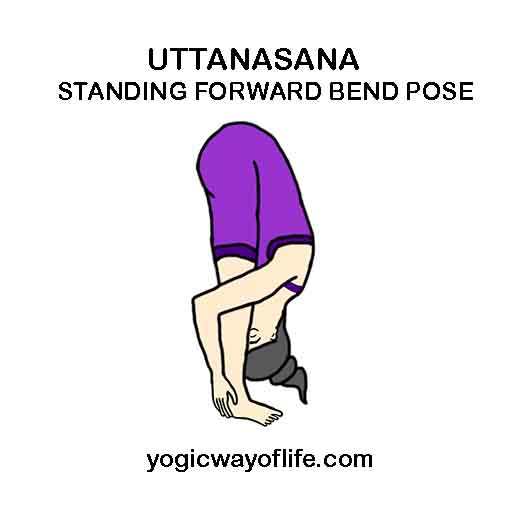
Stand on your mat, feet slightly separated. Pull your knee caps up and engage your thighs. Roll your shoulders back and pull the navel closer to the spine. Adjust your neck and head to align them with your spine. As you inhale, lift your arms up, fingertips pointing to the ceiling.
While exhaling, fold forward, keeping a gentle bent on your knees. Fold forward from your hips, allowing your abdomen to rest on your thighs. Stay here, allowing your palms to rest on your shin. If your palms are on the floor, use a block to support your head so that it does not hang freely. Hold the pose for seven deep breaths.
With each inhalation, push your hips backward. With every out breath, deepen your forward fold. Allow your body to relax completely.
-
Adho Mukha Svanasana – Downward Facing Dog Pose
The posture could improve circulation, boost digestion, and lower blood pressure levels by easing stress. Use the blocks to support your palms.
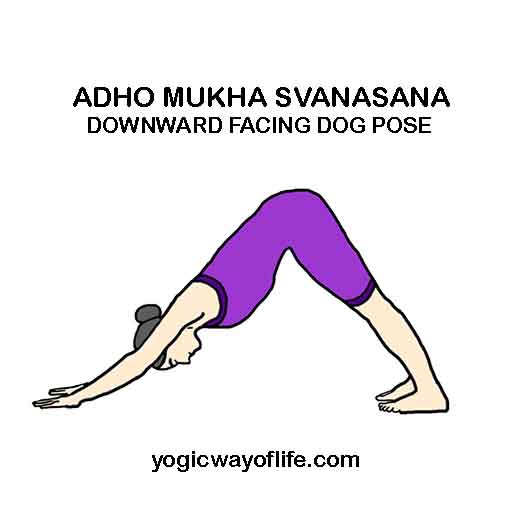
Once you complete the seven breaths in the forward fold, place your palms firmly on the floor. Walk your legs backward until you look like an inverted V. Separate your feet as wide as your hips. Adjust your palms to separate them shoulder distance, wrists coming directly beneath the shoulders. Do not lock your elbows in an attempt to keep the arms straight. Push your hips to the ceiling and press the heels into the mat. Allow your head to rest in between the elbows.
If possible, gaze at your navel. Lengthen your spine as you breathe out and relax your body. Hold for seven deep breaths.
At the end of the seventh exhalation, bend your knees gently and look forward. Place your legs in between your palms to return to Uttanasana.
-
Paschimottanasana – Seated Forward Bend
The seated version of Uttanasana, the posture could ease stress and boost circulation. It also soothes digestive upsets and helps to keep blood pressure under control.
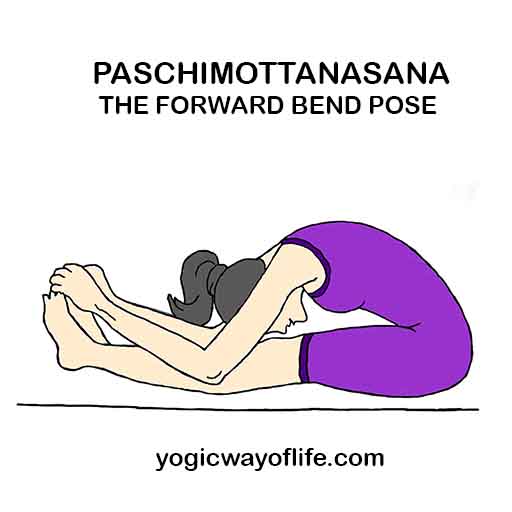
From Uttanasana, gently sit down on the floor. Spin your legs forward to come into the Seated Staff Pose (Dandasana). Using your hands, lift the flesh away from your buttocks to allow your sit bones to rest on the mat. Inhale, lengthen your spine, and lift your arms over your head.
As you exhale, fold forward from your hips, resting the abdomen on your thighs. The aim is to lengthen the spine. So avoid rounding your shoulders in the attempt to hold your feet. You can rest your palms on your shin or either side of your leg.
Hold the posture, gazing at the tips of your toes, for seven deep breaths.
You could place a folded blanket or cushion under your hips if your hamstrings are tight. Alternatively, gently bend your knees to avoid hyperextension in your knees and back.
-
Baddha Konasana – Bound Angle Pose
Use this simple seated posture to calm your body and mind. Keeping your tension under control is essential to prevent blood pressure from spiraling up. Use folded blankets or bolsters to support your knees if they remain suspended in the air.
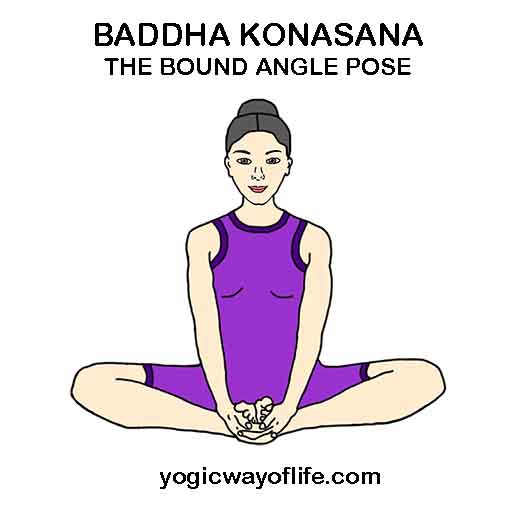
After the seventh exhalation in the Seated Forward Fold, inhale and gently roll back to sit straight. Bend your knees sideways to allow the soles of your feet to come into contact. Press them into each other. Rest your palms on your knees and push them closer to the floor. Inhale and lengthen your spine.
You can stay here if you experience a stretch in your hips, groins, and inner thighs. To experience a deeper stretch, fold forward from your hips as you breathe out, aiming to bring your chin outside your feet. Choose a comfortable position and hold it for seven deep breaths.
-
Supta Padangusthasana – Reclining Hand to Big Toe Pose
As mentioned above, relaxation is the key to effective hypertension management. This posture does that job wonderfully. It relieves the tension from the spine and gives you a chance to let go of what does not serve you.

Stretch out your legs after completing Baddha Konasana. If you have bent forward in the Bound Angle, inhale and slowly sit straight. Gently recline on your back as you exhale until your back is resting entirely on the mat.
Inhale and as you breathe out, bend and bring your right knee to the chest. Wrap your right thumb, index, and middle fingers around your big toe, thumb resting on the top of the big toe. Inhale and gently stretch your leg straight until the sole of your foot gazes at the ceiling.
Hold the posture for seven deep breaths. Exhale and gently release the leg. Repeat the same with your left leg.
You could loop a strap around your extended foot and hold it with your hands, if you are not able to hold your toes and stretch your leg up.
-
Shavasana – Corpse Pose
Savasana is the ultimate way to relax, unwind, and restore. Use this pose to release the tension and stress your body and mind are holding, allowing your blood pressure become healthy.
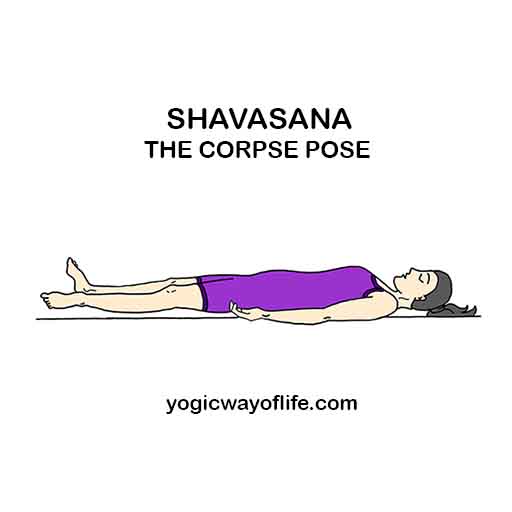
After completing the previous pose, straighten the legs. Separate your legs wider than your hips. Rest the arms away from your torso, giving enough space for armpits to breathe. Relax the spine and head. Close your eyes and breathe naturally. Lie down in the posture until you feel rejuvenated.
Once you are ready, gently move your toes and fingers. Turn your head from side to side. Inhale, stretch your arms over your head, interlace your fingers, and give your entire body a good, deep stretch. Roll your right gently and sit up in any comfortable seated posture.
Deep Breathing for Yoga Management of Hypertension
Deep breathing could calm your sympathetic nervous system. It, simultaneously, stimulates circulation to the heart tissues, thereby helping to prevent the damage caused by high blood pressure.
According to a certain study, taking six deep breaths in 30 seconds reduces the systolic blood pressure by 3.4 units.
Deep breathing also eases the stress levels. The lower the stress level, the more manageable your high blood pressure levels will be.
Sitting in a comfortable asana [preferable Sukhasana or Vajrasana], straighten and lengthen your spine. Rest your palms on your knees, bringing the index and thumb fingertips into contact. Close your eyes and breathe naturally. Observe your breath.
Consciously slow down the pace of your breath. Once the breathing slows down to a comfortable pace, take a deep inhalation for a count of 3. Exhale completely for a count of three. Inhale and exhale through your nostril, allowing the abdomen to expand as you breathe in and collapse as you breathe out. Repeat 15 times.
Once you are comfortable, you can lengthen the duration of your inhalations and exhalations.
Contraindications When Practicing Yoga with High Blood Pressure
In general, yoga is beneficial for hypertension. But as with other condition, contraindications exist here also. Avoid any, and all inversions, i.e. any posture where your legs rest above your heart and/or your heart rests above your head. Some of the poses that a person with hypertension should avoid are:
- Sarvangasana
- Halasana
- Sirshasana
- Adho Mukha Vrkshasana and its variations
- Poorna Uttanasana (If practicing, use a block to support your palms so that head rests at heart level)
- Padahastasana (If practicing, use a block to support your palms so that head rests at heart level)
- Adho Mukha Svanasana (If practicing, use a block to support your palms so that head rests at heart level)
Utilizing yoga poses for hypertension is most beneficial when done as an element of multi-therapeutic approach. However, consult your doctor before you start your yoga practice.


Hello Sir/Madam
Thank you for sending this document.
Regards
Arun Kumar.R